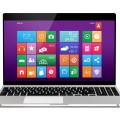 Both unified communications and bring-your-own-device (BYOD) are slowly becoming accepted practices in corporations as companies see the potential of shifting communications and technical support to external providers. The switch is bringing cost savings to businesses and holds promise for higher-education institutions, as well.
Both unified communications and bring-your-own-device (BYOD) are slowly becoming accepted practices in corporations as companies see the potential of shifting communications and technical support to external providers. The switch is bringing cost savings to businesses and holds promise for higher-education institutions, as well.
Unified communications is the real-time routing of voice or text communications to the device closest to an individual at any given time, such as redirecting calls from a landline to a cell phone. BYOD, as a related concept, is the ability to use one’s personal mobile device to complete tasks at work or school.
For companies, the savings can be enormous: According to a global report from service provider Dimension Data, companies who invested in unified communications projects saw a 61 percent cost savings and an increase in employee productivity over the two-year period from 2011 to 2013.
Aruba Networks, a company that specializes in helping organizations transition to unified communications and BYOD also cites increased productivity as one of the main reasons companies go this route, but Aruba adds that the switch isn’t without challenges. Security is a primary concern, and Aruba notes that many businesses worry about having a single infrastructure that is able to service myriad devices.
Higher education institutions have also been embracing the new technology solutions. The Center for Digital Education polled 900 IT decision makers in 2011, including higher education and K–12 campus IT leaders. The respondents reported an increase of 13 percent from 2010 in the implementation of unified communications solutions on their campuses.
The report also states that mobility drives much of the need in higher education for such communications, with staff demanding access to work email and voicemail via smartphones, the ability to receive voicemail and email remotely, and video conferencing as the most desirable features.
BYOD appears to lag slightly behind unified communications in acceptance among educational institutions, with major players in the industry such as Cisco Systems urging institutions to embrace BYOD. According to Cisco, students want to study, work and plan on the devices with which they are familiar, so BYOD makes sense to students. Cisco urges administrators and educators to find ways to embrace technology to engage more students in learning.
[cf]skyword_tracking_tag[/cf]






No Comment